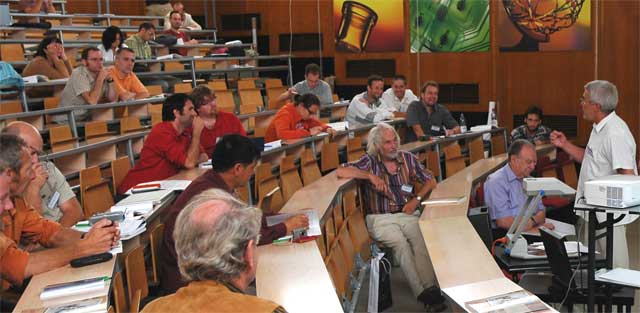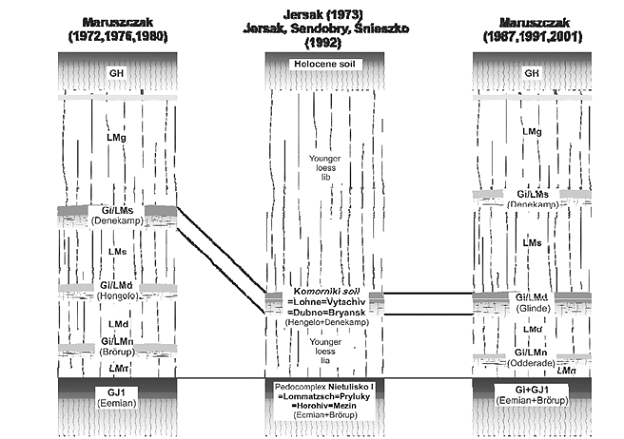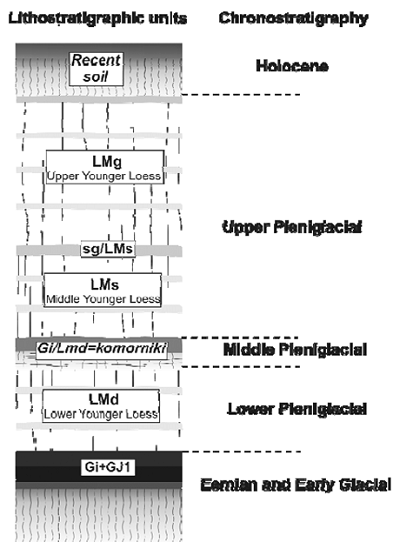LOESSFEST'09 | Aug. 31st – Sept. 3rd, 2009 |Novi Sad-Serbia
Late Pleistocene Loess-Palaeosol Stratigraphy in Poland
Zdzisław Jary1
1Institute of Geography and Regional Development, University of Wroclaw, 50-137 Wroclaw, Poland
The foundations of modern loess stratigraphy in Poland were elaborated more than 30 years ago by Jersak and Maruszczak. Late Pleistocene loess sequence according to Jersak scheme consists of four units (Fig. 1): pedocomplex Nietulisko I with well developed Bbr or Bt horizon in the bottom part and two calcareous loess units (younger loess IIa and IIb) separated by fossil tundra-gley soil complex of Komorniki type. In the top of younger loess IIb unit recent soil has developed. Maruszczak scheme is more complicated and better propagated in current literature. Above the Eemian – Early Weichselian pedocomplex Gi+GJ1 four loess units are distinguished: lowest younger loess (LMn), lower younger loess (LMd), middle younger loess (LMs) and upper younger loess (LMg). These loess units are separated by three interstadial soils: Gi/LMn, Gi/LMd and Gi/LMs. The stratigraphic correlation of particular litho-pedostratigraphic units defined by Jersak and Maruszczak is not obvious.

Additionally it is complicated by fact, that Maruszczak subsequently changed his original interpretation and characteristics of some lithostratigraphic units. One of the most important source of errors and confusions is probably linked with the choice of suitable section to further examinations. Slope loess sections are usually more complicated but their role as a base for environmental reconstruction is limited to the local scale. The regional Late Pleistocene loess stratigraphy and correlation should be completed mainly on the basis of interfluve loess sections. The proper designation of litho-pedostratigraphic units as well as specification of their properties are fundamental for reliable interpretations. The recent investigations carried out by Jary on a dozen of interfluve Late Pleistocene loess sections in Poland and western part of Ukraine confirm previous supposition that representative loess sequence consists of four units: two polygenetic fossil soils (fossil soil sets) and two, usually calcareous, loess units.

Fig. 1. Evolution of the Late Pleistocene loess-palaeosols stratigraphy in Poland elaborated by Maruszczak and its correlation with Jersak scheme

Fig. 2. Litho- and pedostratigraphic units of an interfluve
Late Pleistocene loess-soil sequence in Poland and their chronostratigraphic interpretation acc. Jary (2007)



